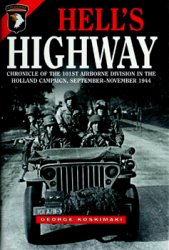The Sino-Soviet split deservedly attracted the attention of political scientists and historians in the West as it developed, in the 1960s, from a war of words to a real border confrontation. Pioneer accounts include Donald Zagoria, The Sino-Soviet Conflict, 1956-61 (Princeton, NJ: Princeton University Press, 1962), William E. Griffith, The Sino-Soviet Rift, 1964-65 (Cambridge, MA, and London: MIT Press, 1964), Klaus Mehnert, Peking and Moscow (New York: G. P. Putnam's Sons, 1963), and John Gittings, Survey of the Sino-Soviet Dispute: A Commentary and Extracts from the Recent Polemics, 1963-67 (London: Oxford University Press, 1968). These books work best with a side-reader, a Chinese propaganda pamphlet, The Polemic on the General Line of the International Communist Movement (Beijing: Foreign Languages Press, 1965).
The mjilitary clashes between China and the Soviet Union in 1969 deepened interest in Sino-Soviet relations in the West, and the historiography thickened by leaps and bounds, with books like Alfred D. Low, The Sino-Soviet Dispute: An Analysis ofthe Polemics (London: Associated University Presses, 1976), and O. Edmund Clubb, China and Russia: The Great Game (New York and London: Columbia University Press, 1971). Herbert J. Ellison (ed.), The Sino-Soviet Conflict: A Global Perspective (Seattle, WA, and London: University of Washington Press, 1982), offers an interesting analysis of the global impact of the split. Besides, this volume contains perhaps the best bibliographic essay of works on the Sino-Soviet split written up to 1982. To get a sense of the Chinese and the Soviet historiography of the split, it is enough to read, for example, Hsiao Fan et al. Ugly Features ofSoviet Social-Imperialism (Beijing: Foreign Languages Press, 1976), and Oleg Borisov and Boris Koloskov, Sino-Soviet Relations, 1945-1973: A Brief History (Moscow: Progress Publishers, 1975).
Partial opening of the archives in the former Communist bloc in the early 1990s prompted scholarly reassessments of the Sino-Soviet split, and the emergence of new, nuanced interpretations, as in Odd Arne Westad (ed.), Brothers in Arms: The Rise and Fall of the Sino-Soviet Alliance, 1945-1963 (Washington, DC: Woodrow Wilson Center Press, 1998), which overall rejects the rigidity of realist scholarship and emphasizes the role of domestic politics, personalities, and perceptions in the making of the confrontation. Domestic politics is also of primary concern in Lorenz Luthi's excellent The Sino-Soviet Split: Cold War in the Communist World (Princeton, NJ: Princeton University, 2008), but decidedly less so in Sergey Radchenko, Two Suns in the Heavens: The Sino-Soviet Struggle for Supremacy, 1962-1967 (Washington, DC: Woodrow Wilson Center Press, 2009), which blames the Sino-Soviet split on the inequality of the alliance.
In addition, a number of important articles appeared in English on the subject: Yang Kuisong, "The Sino-Soviet Border Clash of 1969: From Zhenbao Island to Sino-American Rapprochement,” Cold War History, 1, i (August 2000), 21-52; Wang Dong, The Quarrelling Brothers: New Chinese Archives and Reappraisal of the Sino-Soviet Split, Cold War International History Project (CWIHP) Working Paper No. 49 (Washington, DC: Woodrow Wilson Center, 2006), and Mikhail Prozumenshchikov, "The Sino-Indian Conflict, the Cuban Missile Crisis, and the Sino-Soviet Split, October i962: New Evidence from the Russian Archives,” Cold War International History Project Bulletin (hereafter, CWIHP Bulletin) Nos. 8-9 (Winter 1996-97). The CWIHP Bulletin has other articles pertinent to the subject; see Http://cwihp. si. edu. Many Chinese articles on Sino-Soviet relations by, among others, Li Danhui, Niu Jun, Shen Zhihua, and Yang Kuisong, can be viewed (in Chinese) at the website of the International Cold War History Research Center at East China Normal University, Www. coldwarchina. com.
Beyond comparatively thin new Cold War scholarship on the Sino-Soviet split, there is growing literature on adjacent subjects. Thus, an important recent book on the Chinese foreign policy - Chen Jian, Mao’s China and the Cold War (Chapel Hill, NC: University of North Carolina Press, 200i) - takes up the Sino-Soviet split as a function of Mao's domestic agenda, in particular, his preoccupation with the future of the Chinese revolution. Parallel arguments stand out in Roderick MacFarquhar, The Origins of the Cultural Revolution, vol. III, The Coming of the Cataclysm 1961-1966 (New York: Columbia University Press, i997), a book concerned with a major domestic Chinese upheaval, which had a direct relevance for Sino-Soviet relations. Very much out of tune with these studies, but based on impressive research, is a controversial biography of Mao, Jung Chang and Jon Halliday, Mao: The Unknown Story (New York: Anchor Books, 2006), which depicts the Sino-Soviet split as essentially a product of a power struggle between Beijing and Moscow.
Other important sources are volume XV of Roderick MacFarquhar and John K. Fairbank (eds.), The Cambridge History of China (Cambridge: Cambridge University Press, i99i), in particular the chapter by Thomas Robinson; and John Lewis and Xue Litai, Imagined Enemies: China Prepares for Uncertain War (Stanford, CA: Stanford University Press, 2006). Another useful book on China's foreign policy in the 1960s is Barbara Barnouin and Yu Changgen, Chinese Foreign Policy during the Cultural Revolution (London and New York: Kegan Paul International; distributed by Columbia University Press, i998).
There is also a growing number of memoirs by Chinese participants in the policymaking process, of which the most noteworthy for our purpose is Wu Lengxi, Shinian lunzhan, 1956-1966: Zhong Su guanxi huiyilu [Ten Year War of Words: A Memoir of Sino-Soviet Relations], 2 vols. (Beijing: Zhongyang wenxian, 1999). Volumes II and III of Zhonggong zhongyang wenxian yanjiushi, Zhou Enlai nianpu, i949-i976 [Zhou Enlai Chronology; i949-i976] (Beijing: Zhongyang wenxian, i997), are both indispensable for thorough research on any aspect of Chinese foreign policy in the i960s, including its Soviet angle. By the same token, former Soviet diplomats published a number of interesting accounts or memoirs of Sino-Soviet relations in the i960s, including Aleksei A. Brezhnev, Kitai: Tersnistyi put k dobrososedstvu: vospominaniia i razmyshleniia [China: The Thorny Path to Good Neighborliness; Reminiscences and Reflections] (Moscow: Mezhdunarodnye otnosheniia, 1998), Boris N. Vereshchagin, V starom i novom Kitae: iz vospominanii diplomata [In Old and New China: From the Reminiscences of a Diplomat] (Moscow: In-t Dalnego Vostoka, 1999), G. V. Kireev, Rossiia-Kitai: neizvestnye stranitsy pogranichnykh peregovorov [Russia-China: Unknown Pages from the Border Talks] (Moscow: Rosspen, 2006), and Vladimir Fedotov, Polveka vmeste s Kitaem: vospominania, zapisi, razmyshleniia [A Half-Century with China: Reminiscences, Notes, Reflections] (Moscow: Rosspen, 2005).




 World History
World History









